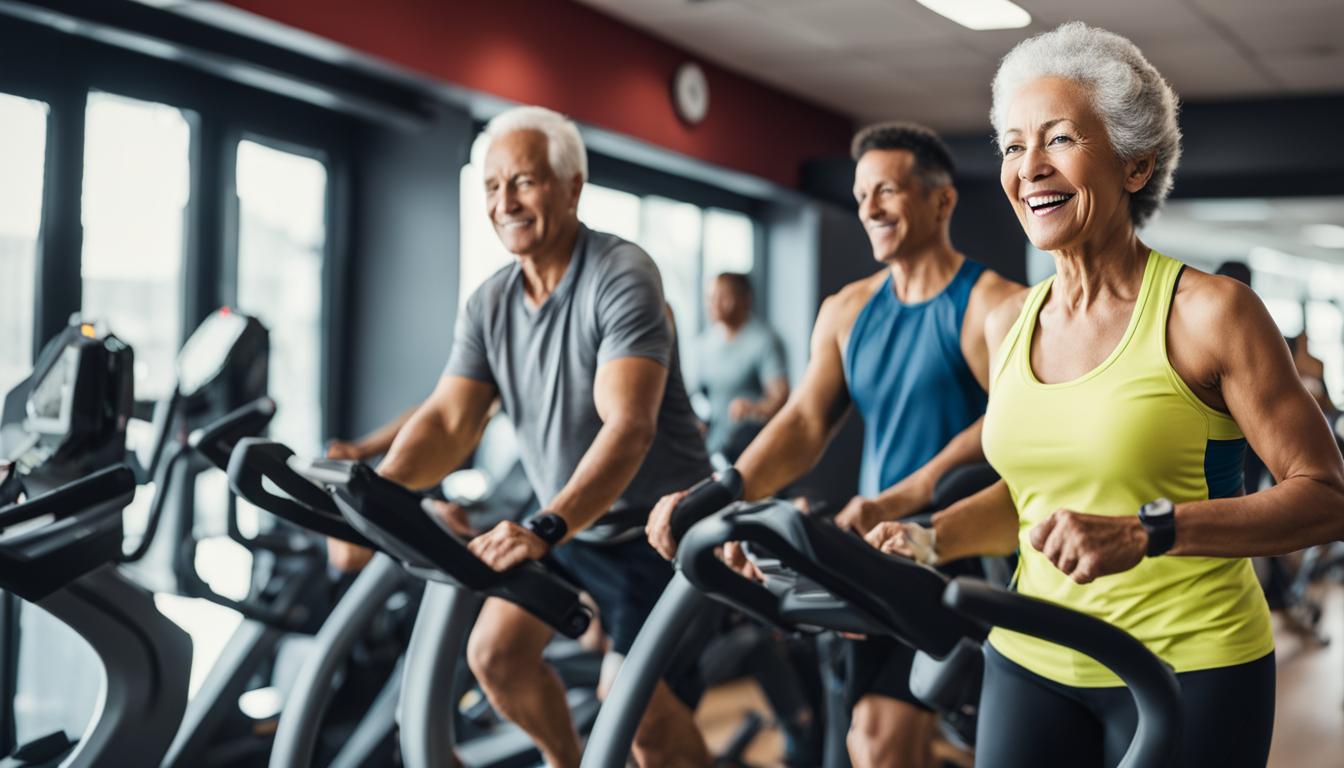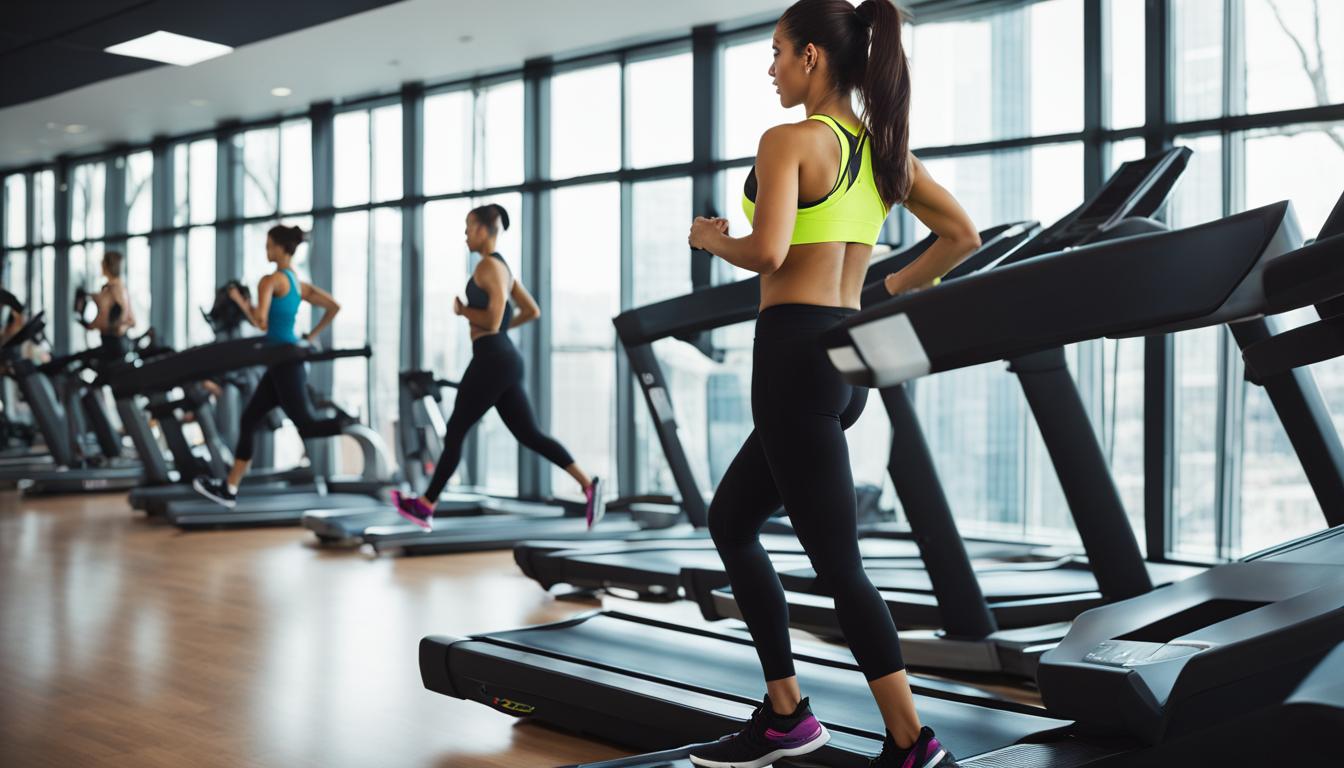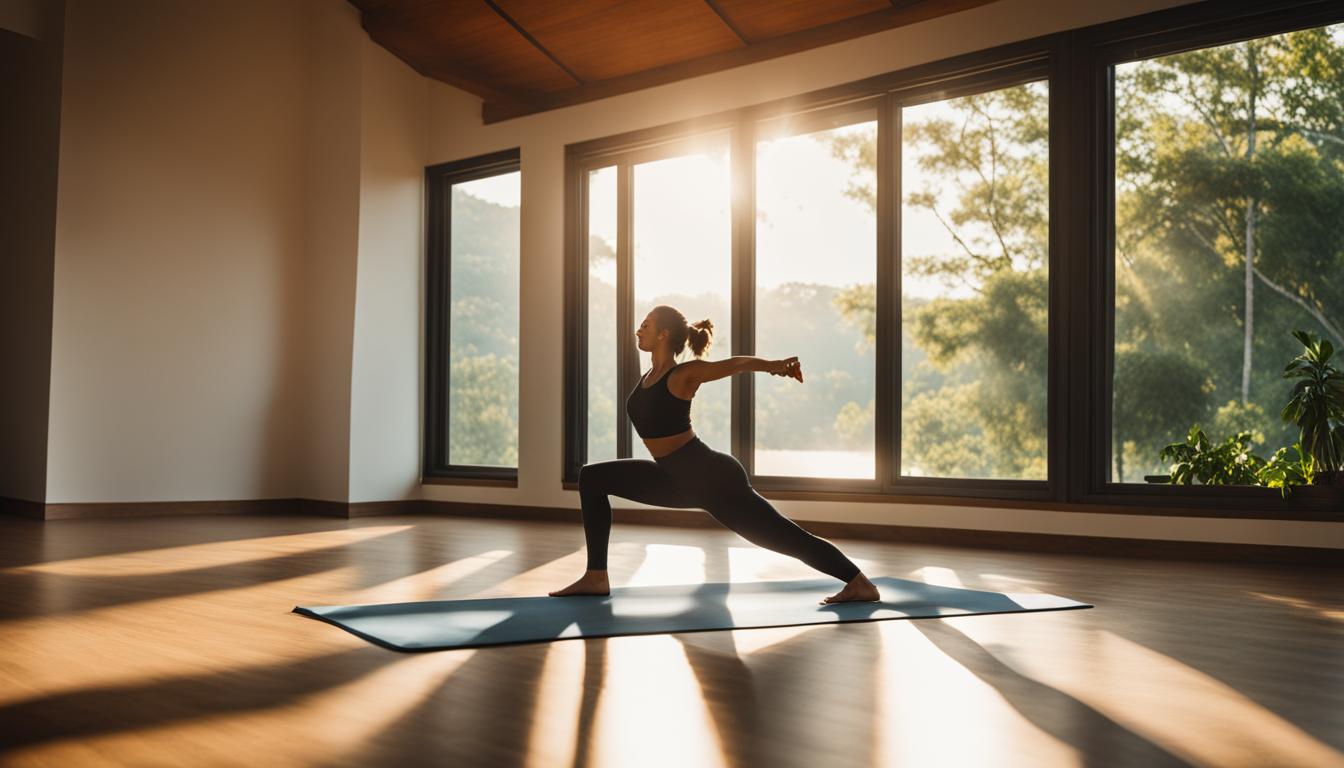Welcome to my article on senior weight loss exercises. As we age, it’s important to prioritize our health and maintain a healthy weight. Cardio exercises are a fantastic way for seniors to lose weight, improve their cardiovascular health, and enjoy an active lifestyle. In this article, I will share the top cardio exercises that seniors can incorporate into their fitness routines to achieve their weight loss goals.
Key Takeaways:
- Cardio exercises can greatly improve heart health and aid in weight loss for seniors.
- It is important to focus on low-impact cardio exercises to avoid joint strain and injury.
- High-intensity interval training (HIIT) can be modified for seniors and is an effective way to burn calories and improve cardiovascular health.
- Exercises like stair climbing, running, walking, cycling, sprinting, using the elliptical, and jump rope are suitable for seniors and can contribute to weight loss.
- Regular cardio exercise, combined with a balanced diet, can lead to successful weight loss and overall fitness in seniors.
Understanding Cardio Exercises for Seniors
When it comes to senior fitness, incorporating cardio exercises into their routine is crucial for maintaining overall health and well-being. Cardio exercises, also known as cardiovascular exercises or aerobic exercises, are any type of exercise that increases the heart rate and promotes healthy blood flow throughout the body. These exercises can be performed by seniors through various exercise routines or fitness programs designed specifically for older adults.
It is important for seniors to focus on low-impact cardio exercises to avoid joint strain and injury. Low-impact exercises are gentler on the joints and provide a smoother range of motion. This is especially important for older adults who may have age-related joint issues or arthritis. Low-impact cardio exercises help seniors maintain their cardiovascular fitness without putting excessive stress on their joints.
Senior exercise routines and fitness programs are tailored to meet the specific needs and capabilities of older adults. These programs often include a combination of low-impact cardio exercises, strength training, flexibility exercises, and balance exercises. They are designed to improve overall fitness, promote weight loss, enhance cardiovascular health, and increase energy levels.
Low-impact cardio exercises for seniors can include activities such as walking, swimming, cycling, elliptical training, and water aerobics. These exercises provide a wide range of benefits, including:
- Improved heart health: Cardio exercises help strengthen the heart muscle, improve blood circulation, and lower the risk of cardiovascular diseases.
- Weight management: Regular cardio exercises help burn calories, increase metabolism, and promote weight loss. Combining cardio exercises with a healthy diet can lead to successful weight management in seniors.
- Increased endurance: By regularly engaging in cardio exercises, seniors can improve their stamina and endurance levels, allowing them to perform daily activities with ease.
- Reduced stress and improved mood: Cardio exercises release endorphins, which are natural mood-boosting chemicals in the brain. Regular exercise can help reduce stress, anxiety, and depression in seniors.
It is important for seniors to consult with their healthcare providers before starting any new exercise program, especially if they have any pre-existing health conditions or concerns. A healthcare professional can provide guidance and recommendations based on individual needs and limitations.
Overall, understanding and incorporating cardio exercises into senior exercise routines and fitness programs is essential for promoting optimal health and well-being in older adults. These exercises can help seniors maintain a healthy weight, improve cardiovascular fitness, boost mood, and enhance overall quality of life.
| Low-Impact Cardio Exercises for Seniors | Benefits |
|---|---|
| Walking | Improves cardiovascular health, promotes weight loss, and is accessible for all fitness levels |
| Swimming | Provides a full-body workout, low impact on joints, and improves cardiovascular fitness |
| Cycling | Strengthens leg muscles, improves cardiovascular health, and can be done indoors or outdoors |
| Elliptical Training | Low impact on joints, works both upper and lower body, and improves cardiovascular endurance |
| Water Aerobics | Gentle on joints, improves muscle strength and flexibility, and enhances cardiovascular fitness |
It is important for seniors to choose exercises that they enjoy and can perform safely. Gradually increasing the duration and intensity of the exercises over time can help seniors progress and continually challenge themselves. Remember to always listen to the body and modify exercises as needed to avoid any discomfort or pain.
High-Intensity Interval Training (HIIT) for Seniors
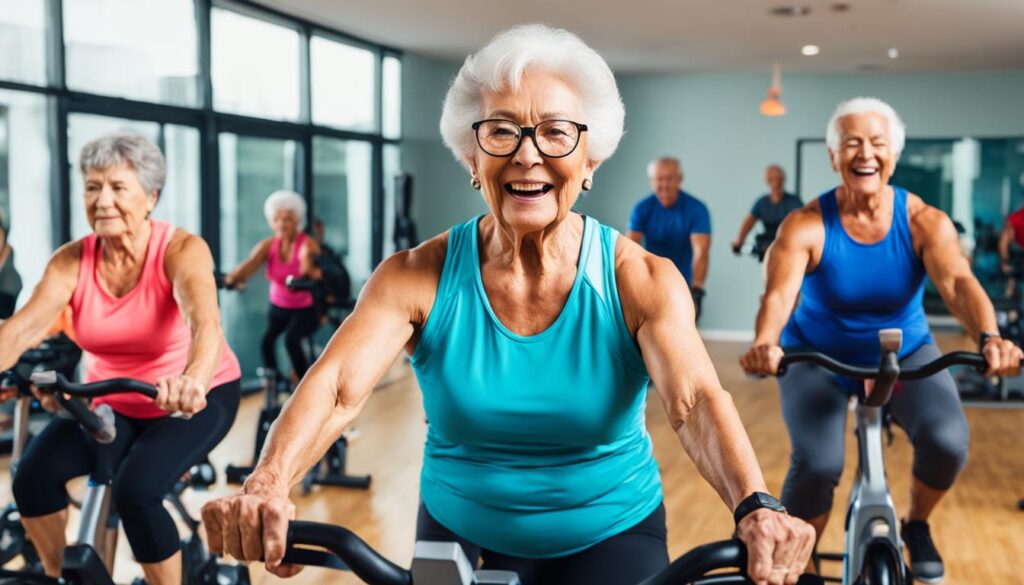
High-intensity interval training (HIIT) is an excellent form of cardio exercise for seniors looking to amp up their workouts and achieve weight loss goals. This type of workout alternates between short bursts of high-intensity activity and periods of rest or low-intensity activity. HIIT can be modified to suit the fitness level of seniors, making it a safe and effective way to burn calories, improve cardiovascular health, and lose weight.
During a HIIT workout, seniors engage in brief periods of intense exercise, such as fast-paced walking, jogging, or stationary bike sprints, followed by recovery periods of low-intensity exercise or rest. These intermittent bursts of high-intensity activity not only elevate the heart rate but also challenge the body to work harder, resulting in increased calorie burn and improved cardiovascular fitness.
One of the major advantages of HIIT for seniors is the flexibility it offers in terms of exercise selection and intensity. Seniors can choose exercises that are low-impact and joint-friendly, such as swimming, cycling, or using an elliptical machine. They can also adjust the intensity and duration of each high-intensity interval to suit their comfort and fitness level.
Studies have shown that HIIT workouts can yield significant benefits for seniors in terms of weight loss and overall fitness. A 2018 study published in the Journal of Aging and Physical Activity found that HIIT training resulted in greater reductions in body fat percentage and waist circumference compared to continuous moderate-intensity exercise in older adults.
“High-intensity interval training can be an efficient and effective way for seniors to burn calories, improve cardiovascular health, and achieve weight loss. By incorporating short bursts of intense activity into their workouts, seniors can maximize their exercise benefits while also tailoring the workout to their individual fitness level.”
Pairing HIIT workouts with proper nutrition can further enhance weight loss results in seniors. A balanced diet that includes lean proteins, whole grains, fruits, and vegetables will support the body’s energy requirements and muscle recovery.
As with any new exercise program, it is important for seniors to consult with their healthcare provider before starting HIIT workouts. The provider can help assess individual fitness levels, offer appropriate modifications, and ensure that seniors can safely engage in high-intensity exercise.
| Benefits of High-Intensity Interval Training for Seniors |
|---|
| 1. Increased calorie burn |
| 2. Improved cardiovascular health |
| 3. Enhanced weight loss |
| 4. Efficient use of workout time |
| 5. Flexibility in exercise selection and intensity |
High-intensity interval training offers seniors a challenging and time-efficient way to improve their overall fitness and achieve weight loss. By incorporating HIIT workouts into their exercise routine and making appropriate modifications, seniors can experience the many benefits of this type of cardio exercise.
Stair Climber for Seniors
When it comes to senior weight loss exercises, the stair climber is an excellent choice. Not only is it a low-impact cardio exercise that puts minimal stress on the joints, but it also provides a full-body workout.
The stair climber primarily targets the legs, helping to improve leg endurance and strength. As seniors climb up and down the stairs, they engage their quadriceps, hamstrings, calves, and glutes. This not only tones and strengthens the lower body but also helps with balance and mobility.
But the benefits of the stair climber don’t stop there. This exercise also works the cardiovascular system, helping to improve cardiovascular fitness. By elevating the heart rate and increasing blood flow, seniors can enhance their heart health and overall endurance.
What’s more, the stair climber is a calorie-burning powerhouse. It can burn a significant amount of calories in a short amount of time, making it an effective tool for weight loss. Seniors can customize their workout intensity by adjusting the speed and resistance settings on the machine, allowing for a personalized and challenging workout.
“The stair climber offers a safe and efficient way for seniors to get their heart pumping and burn calories. It’s a great option for those looking to lose weight and improve their overall fitness.”
When using the stair climber, seniors should start gradually and listen to their bodies. It’s important to maintain proper form, keeping the core engaged and shoulders relaxed. Seniors can start with shorter workout sessions and gradually increase the duration as their fitness levels improve.
Here is a complete table showcasing the estimated calorie burn for 30 minutes of stair climbing based on body weight:
| Body Weight | Calories Burned in 30 Minutes |
|---|---|
| 150 lbs | 180 calories |
| 200 lbs | 240 calories |
| 250 lbs | 300 calories |
As with any exercise routine, it’s essential for seniors to consult with their healthcare provider before starting a stair climber program. They can provide guidance on appropriate intensity levels and any considerations specific to the individual’s health and fitness.
Now that we’ve explored the benefits and mechanics of the stair climber, let’s dive into other senior weight loss exercises in the following sections.
Running for Seniors
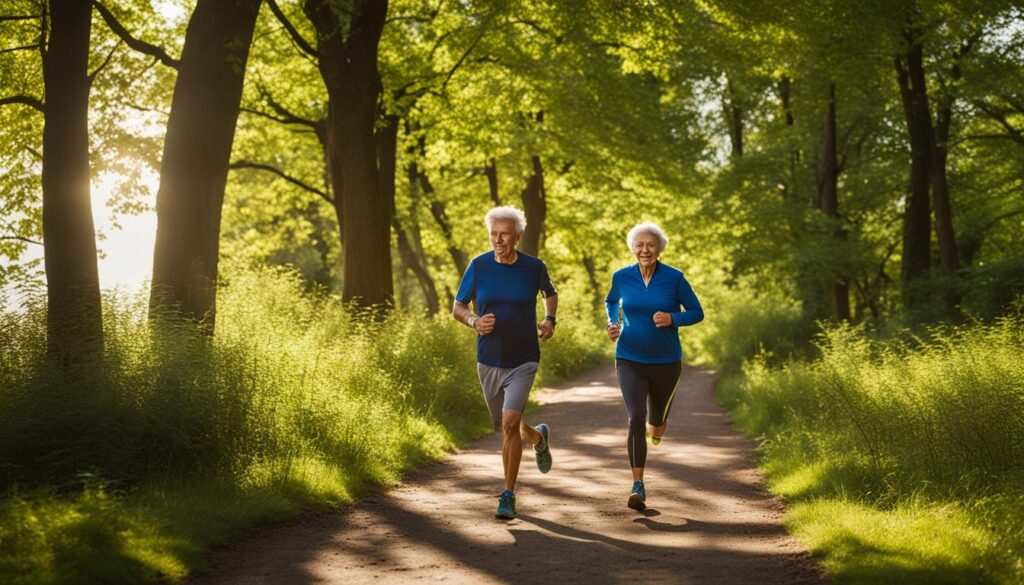
Running is a fantastic form of cardiovascular exercise that can greatly benefit seniors looking to lose weight. Not only does it burn calories, but it also offers a wide range of health benefits, including improved cardiovascular health, increased muscle strength, and a boost in mood and mental well-being.
When it comes to running for seniors, it’s important to consider individual fitness levels and adjust the intensity and duration accordingly. Starting with shorter distances or intervals and gradually increasing the intensity can help prevent injuries and allow for a safe and effective workout.
Running engages multiple muscle groups, including the legs, core, and upper body, making it a great full-body exercise. It helps improve overall endurance, strengthens bones, and supports weight loss goals.
“Running has been a game-changer for me as a senior. It has not only helped me shed excess weight but has also improved my energy levels and overall well-being. I feel stronger and more confident in my everyday activities.” – Jane, 65
To get started with running for seniors, it’s essential to have proper running shoes that provide adequate support and cushioning. This will help reduce the risk of injury and ensure a comfortable experience.
Benefits of Running for Seniors:
- Improved cardiovascular health
- Weight loss and management
- Increased muscle strength and endurance
- Enhanced bone density
- Improved mood and mental well-being
It’s worth noting that running may not be suitable for everyone, especially those with joint issues or certain health conditions. If you have any concerns or underlying medical conditions, it’s essential to consult with your healthcare provider before starting a running routine.
Incorporating running into your exercise routine can help you reach your weight loss goals and improve overall fitness as a senior. Remember to listen to your body, start slowly, and gradually increase the intensity. With regular practice and consistency, you’ll enjoy the physical and mental benefits that running has to offer.
Walking for Seniors
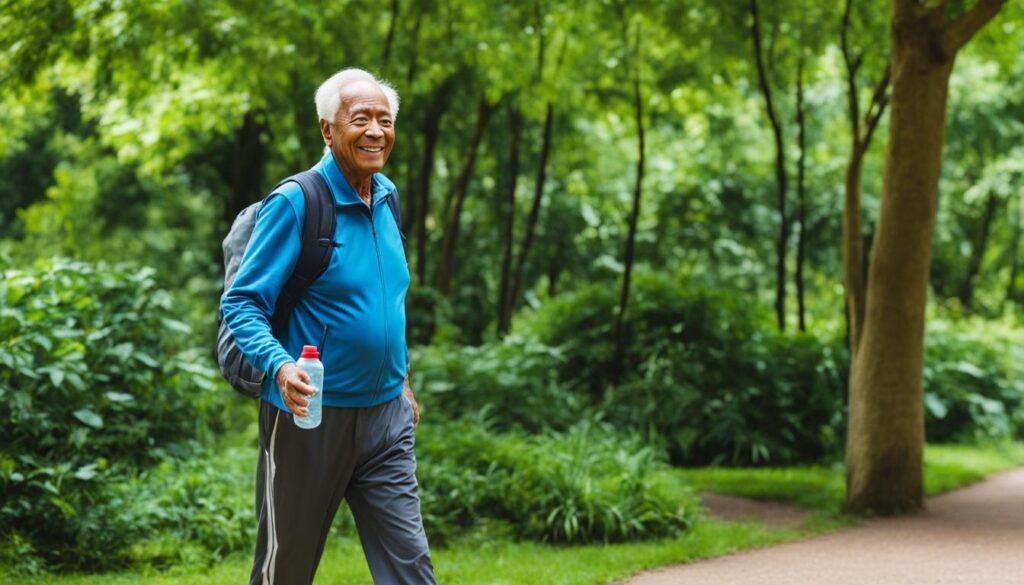
Walking is a powerful and accessible cardio exercise that can benefit seniors of all fitness levels, aiding in weight loss, improving cardiovascular health, and maintaining a healthy weight. Not only is walking a low-impact activity that puts minimal stress on the joints, but it also offers numerous health advantages, making it an ideal exercise choice for older adults.
Regular brisk walking can provide seniors with the following benefits:
- Improved cardiovascular health: Walking increases heart rate and promotes healthy blood flow, which enhances heart health and reduces the risk of cardiovascular diseases such as heart attack or stroke.
- Weight loss: Engaging in brisk walks can help seniors burn calories and shed excess weight, contributing to a healthy body mass index (BMI) and overall weight management.
- Maintaining a healthy weight: Walking can be an effective way for seniors to maintain a healthy weight once they have achieved their weight loss goals. It helps prevent weight regain and promotes overall fitness.
- Enhanced mood: Walking outdoors allows seniors to connect with nature and enjoy fresh air and sunlight, which can have a positive impact on mood and mental well-being. Studies suggest that walking can help reduce anxiety and depression, improving overall emotional health.
- Increased bone strength: Walking is considered a weight-bearing exercise that stimulates bone density, which is vital for seniors in preventing osteoporosis and reducing the risk of fractures.
Brisk walking can be easily incorporated into daily routines, making it a practical and sustainable exercise option for seniors. Whether it’s a stroll in the neighborhood, a walk in the park, or joining a walking group, seniors can enjoy the benefits of walking while socializing and exploring their surroundings.
Expert Tip:
“To make the most of your walking routine, aim for at least 150 minutes of moderate-intensity aerobic activity every week. Start with shorter walks and gradually increase the duration and pace as your fitness improves. Remember to wear comfortable shoes, stay hydrated, and listen to your body’s cues.”
Engaging in regular brisk walking can be an excellent choice for seniors seeking to lose weight, improve cardiovascular health, and maintain a healthy lifestyle. Let’s get moving!
Cycling for Seniors
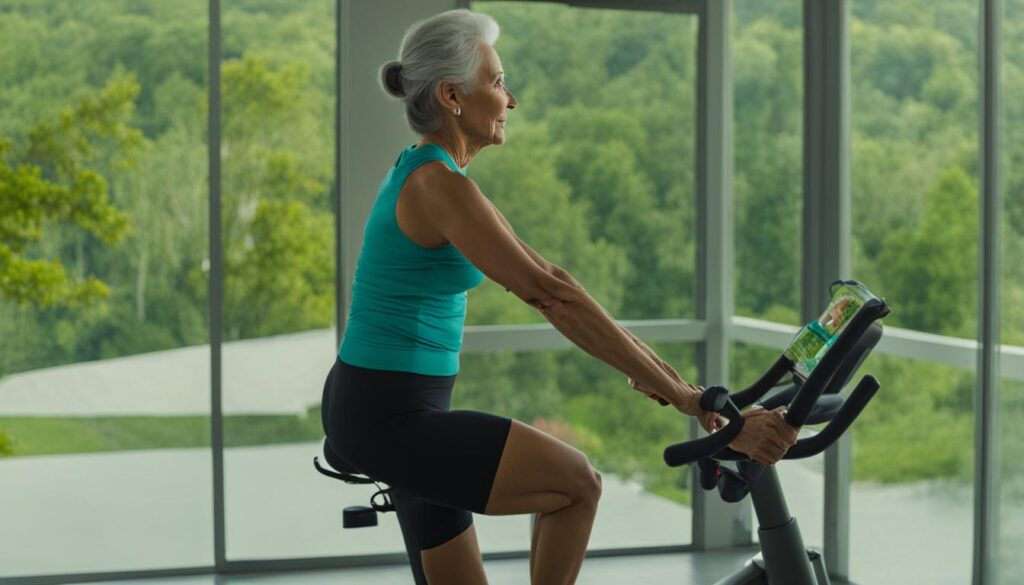
Cycling is a fantastic cardio exercise option for seniors of all fitness levels. Whether you prefer to cruise around the neighborhood on a traditional bicycle or hop on a stationary bike indoors, cycling offers a low-impact workout that can yield impressive results. Not only does it help improve cardiovascular health, but it also strengthens muscles and contributes to calorie burning, making it an excellent choice for seniors looking to stay active and maintain a healthy weight.
One of the great advantages of cycling is its versatility. Seniors can enjoy the fresh air and sunshine while cycling outdoors, exploring scenic bike paths or cycling clubs in their local communities. For those who prefer the comfort and convenience of an indoor workout, stationary bikes provide a perfect solution. They come equipped with adjustable resistance levels, making it easy to tailor the intensity of the workout to individual fitness levels.
Regular cycling offers a multitude of health benefits. It helps improve cardiovascular endurance, reducing the risk of heart disease and other cardiovascular conditions. Cycling also targets major muscle groups, such as the legs, glutes, and core, helping to increase strength and stability. Additionally, it is a weight-bearing exercise that can help maintain bone health and prevent osteoporosis.
To highlight the benefits of cycling for seniors, here’s a table showcasing some key advantages:
| Benefits of Cycling for Seniors |
|---|
| Improves cardiovascular health |
| Strengthens leg, glute, and core muscles |
| Helps maintain a healthy weight |
| Enhances balance and stability |
| Reduces the risk of heart disease and other cardiovascular conditions |
| Increases bone density and prevents osteoporosis |
As with any exercise program, it’s essential for seniors to start at a comfortable pace and gradually increase the duration and intensity of their cycling sessions. It’s also important to choose a bike that fits properly and provides adequate support. Consulting with a healthcare professional or a certified fitness trainer can help seniors create a tailored cycling routine that suits their specific needs and abilities.
So, whether you prefer the great outdoors or the comfort of an indoor workout, cycling is an excellent choice for seniors looking to engage in a fun, low-impact cardio workout that provides numerous health benefits. Stay active and enjoy the ride!
Sprinting for Seniors
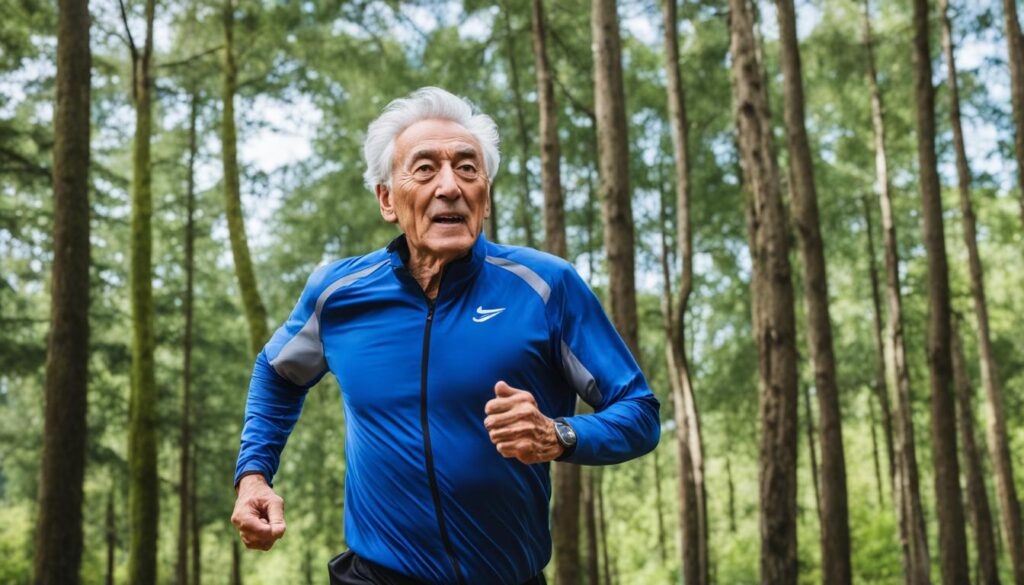
When it comes to senior cardio workouts, sprinting is an excellent option for those looking to lose weight and improve their overall fitness. Sprinting, a form of high-intensity interval training (HIIT), offers numerous benefits, including increased speed, agility, and cardiovascular fitness.
Unlike steady-state cardio exercises, such as walking or jogging, sprinting involves short bursts of intense activity followed by periods of rest or low-intensity activity. This interval training approach can be customized to fit the individual’s fitness level, making it suitable for seniors of all abilities.
One of the major advantages of sprinting for seniors is its ability to burn calories effectively. The high-intensity nature of sprinting elevates the heart rate and ramps up the body’s calorie expenditure, aiding in weight loss. Additionally, sprinting can help improve muscle tone and boost metabolism, leading to long-term weight management.
It’s important for seniors to approach sprinting with caution and gradually increase the intensity as their fitness improves. Starting with shorter sprint intervals and longer rest periods can help prevent overexertion and reduce the risk of injury.
The Benefits of Sprinting for Seniors
- Improved Cardiovascular Fitness: Sprinting challenges the cardiovascular system, improving heart health and stamina.
- Weight Loss: The high-intensity nature of sprinting can burn a significant number of calories, promoting weight loss.
- Increased Speed and Agility: Regular sprinting workouts can enhance speed, agility, and coordination in seniors.
- Stronger Muscles: Sprinting engages multiple muscle groups, helping seniors build strength and improve muscle tone.
If you’re ready to incorporate sprinting into your senior cardio workouts, consider starting with the following beginner-friendly sprinting routine:
| Week | Workout |
|---|---|
| 1-2 | 5-10 sets of 30-second sprints with 2 minutes of rest in between |
| 3-4 | 7-12 sets of 30-second sprints with 1.5 minutes of rest in between |
| 5-6 | 10-15 sets of 30-second sprints with 1 minute of rest in between |
Remember to warm up before each sprinting session with dynamic stretches and cool down with gentle exercises and static stretches to prevent muscle strain and promote flexibility.
It’s always recommended to consult with a healthcare professional before starting any new exercise program, especially if you have any underlying health conditions or concerns.
Elliptical for Seniors
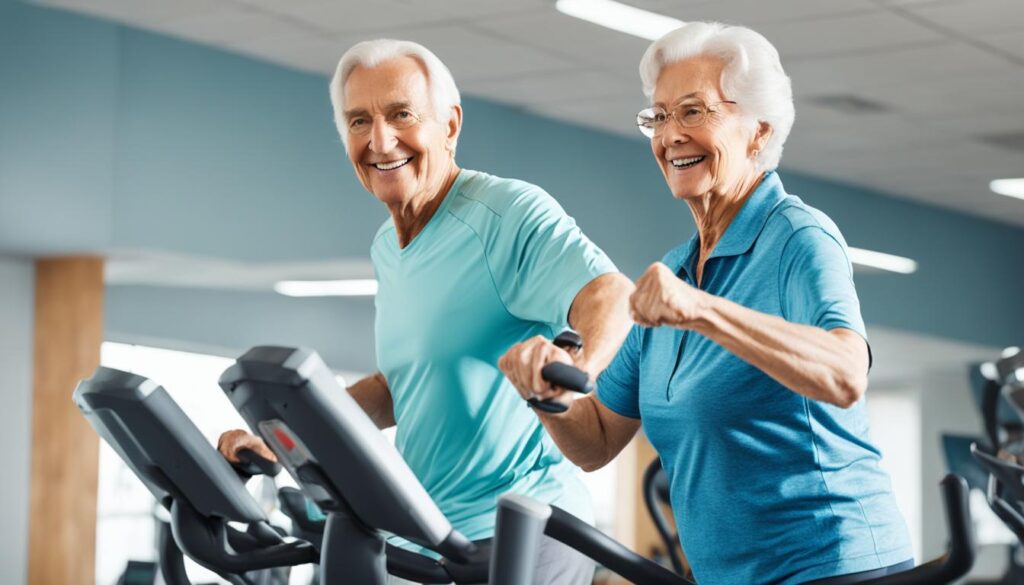
The elliptical machine is a fantastic option for seniors who are looking for a low-impact cardio workout. It is a staple piece of equipment found in most gyms and fitness centers, making it easily accessible to older adults. The elliptical provides a full-body workout while minimizing stress on the joints, which is particularly important for seniors who may have joint pain or arthritis.
One of the main benefits of using an elliptical for cardio exercise is its smooth motion. The elliptical trainer mimics a natural walking or running motion, allowing seniors to engage in cardiovascular activity without straining their joints. This makes it a safe and effective option for seniors who may need to avoid high-impact activities like running or jumping.
When using an elliptical machine, seniors can adjust the resistance and incline levels to suit their fitness level and goals. This allows for gradual progression and ensures that seniors can challenge themselves as they become fitter and stronger. The elliptical machine also offers various workout programs that can be tailored to individual needs, providing a versatile and customizable cardio workout.
Exercise on an elliptical machine offers a wide range of benefits for seniors. It improves cardiovascular health, strengthens muscles, and burns calories, which can contribute to weight loss and weight management. Regular use of the elliptical can also boost endurance and increase overall fitness levels, allowing seniors to excel in their daily activities and maintain an active lifestyle.
To make the most out of an elliptical workout, seniors should aim for at least 30 minutes of moderate-intensity cardio exercise on most days of the week. It’s important to start with a warm-up and cool-down session to prepare the body for exercise and prevent injury. Additionally, using proper form and posture on the elliptical machine is essential to maximize the benefits and minimize the risk of strain or discomfort.
Incorporating elliptical training into a senior’s fitness routine can be an excellent way to improve cardiovascular health, burn calories, and achieve weight loss goals. Its low-impact nature makes it a safe and effective option for seniors, ensuring that they can engage in regular cardio workouts without putting excessive stress on their joints. Whether at the gym or at home, the elliptical machine is a valuable tool for seniors looking to enhance their overall health and well-being.
Jump Rope for Seniors
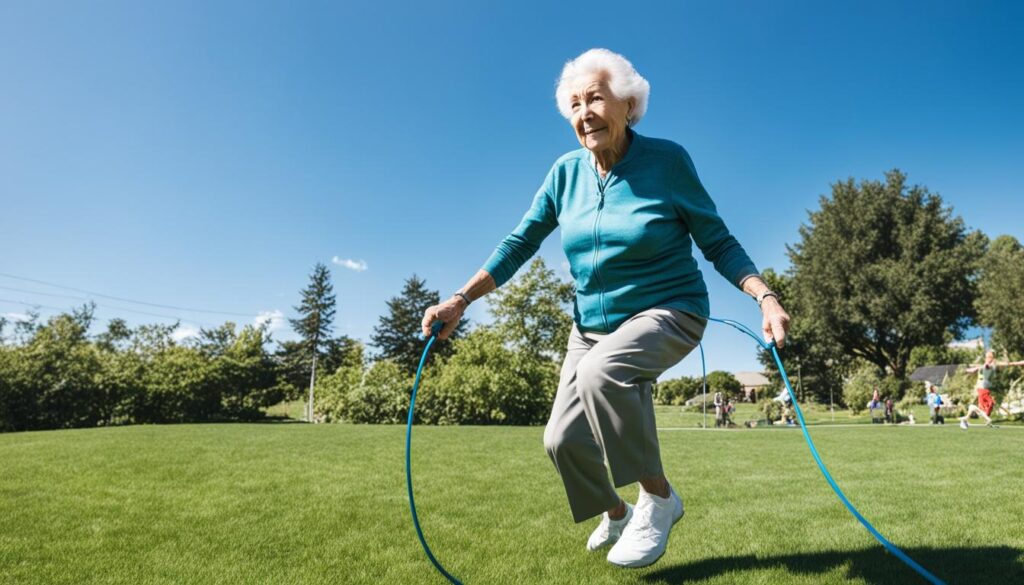
Jumping rope is a fantastic cardio exercise that can be adapted to suit the fitness level of seniors. This full-body workout engages multiple muscle groups, burns calories, and provides a fun and challenging way to improve cardiovascular health. Whether done at home or in a gym, jumping rope offers a convenient and effective option for seniors looking for a cardio workout.
Jump rope exercises can be modified to accommodate different fitness levels. Beginners can start with shorter intervals and gradually increase the duration as they build stamina. Seniors with joint issues or mobility concerns can opt for low-impact variations, such as jumping in place or performing one-legged jumps.
This versatile exercise can be incorporated into a workout routine or used as a standalone activity. It requires minimal equipment and can be done indoors or outdoors, making it easily accessible for seniors. Jumping rope not only aids in weight loss but also enhances coordination, agility, and bone density.
Benefits of Jump Rope for Seniors:
- Improves cardiovascular health
- Burns calories and aids in weight loss
- Strengthens muscles, including legs, shoulders, and core
- Enhances coordination and agility
- Helps maintain bone density
Seniors should start with a warm-up routine that includes dynamic stretches and gentle exercises to prepare the body for jumping rope. It is also important to wear supportive shoes and choose a suitable surface to minimize joint impact.
If you’re considering adding jump rope to your fitness routine, consult with a healthcare professional or a certified fitness trainer to ensure it is safe and appropriate for your current health status and fitness level.
“Jumping rope is a versatile and effective cardio exercise for seniors that can be fun and challenging. It offers numerous health benefits, including improved cardiovascular health, weight loss, and increased muscle strength.”
| Jump Rope Exercises for Seniors | Description |
|---|---|
| Basic Jump | A simple jump with both feet leaving the ground and the rope passing under your feet. |
| Step Jacks | Instead of jumping, step one foot out to the side as the rope passes under, then alternate the stepping foot. |
| High Knees | While jumping, raise your knees towards your chest, aiming to touch them with the passing rope. |
| Single-Leg Hop | Similar to the basic jump, but with one foot lifted off the ground. Alternate legs throughout the exercise. |
What Are the Best Low-Impact Cardio Exercises for Seniors for Weight Loss?
Some of the best low-impact cardio exercises for seniors for weight loss include walking, swimming, cycling, and water aerobics. These activities are gentle on the joints while providing an effective low-impact cardio workout. They can help seniors improve their cardiovascular health and manage their weight without putting excessive strain on their bodies.
Benefits of Cardio Exercise for Seniors
Regular cardio exercise is not only essential for weight loss in seniors, but it also offers a wide range of health benefits that contribute to their overall well-being. Here are some of the key benefits of incorporating cardio exercise into the senior fitness routine:
Reduced Risk of Chronic Diseases
Engaging in regular cardio exercise can help seniors reduce their risk of chronic diseases such as heart disease, diabetes, and certain types of cancer. Cardiovascular workouts stimulate the heart and circulatory system, promoting healthy blood flow and reducing the likelihood of developing these conditions.
Improved Heart Health
Cardio exercise strengthens the heart muscle, leading to improved heart health and reduced risk of cardiovascular diseases. It helps lower blood pressure, improve cholesterol levels, and enhance overall cardiovascular fitness. Seniors who regularly engage in cardio exercise can enjoy better heart health and a reduced risk of heart-related complications.
Weight Management
Exercising for weight loss in seniors is especially important as it helps maintain a healthy body weight and manage body composition. Cardio workouts burn calories, promoting weight loss and the maintenance of a healthy weight. Combined with a balanced diet, cardio exercise can be an effective tool for seniors to achieve and sustain their weight loss goals.
Increased Strength and Endurance
Regular cardio exercise improves muscular strength and endurance in seniors, enabling them to perform daily tasks with greater ease and reducing the risk of falls and injuries. It helps strengthen the muscles used in daily activities, leading to increased overall functional fitness and mobility.
Improved Mental Health
Engaging in cardio exercise releases endorphins, commonly known as “feel-good” hormones, which can help improve mood and reduce symptoms of depression and anxiety. The mental and emotional well-being of seniors can greatly benefit from including cardio exercise in their fitness routine, leading to improved overall quality of life.
By reaping the benefits of cardio exercise, seniors can enhance their health, maintain their independence, and enjoy a higher quality of life. It is important for older adults to consult with their healthcare provider before starting any new exercise program to ensure it is safe and appropriate for their individual needs and medical condition.
Conclusion
Cardio exercises play a crucial role in the weight loss journey of seniors, contributing to overall fitness and well-being. By incorporating the top cardio exercises mentioned in this article into their fitness routine, older adults can enhance cardiovascular health, shed excess weight, and maintain a healthy lifestyle.
It is imperative for seniors to choose exercises that are low-impact and tailored to their individual fitness levels. This ensures optimal results while minimizing the risk of injury. Regular engagement in senior weight loss exercises, such as senior cardio workouts, paired with a balanced diet, is a winning combination for successful weight loss among older adults.
Remember, consistency is key. By committing to a regular cardio exercise regimen and adopting healthy eating habits, seniors can achieve their weight loss goals and experience the numerous benefits that come with improved cardiovascular fitness. So lace up those shoes, get moving, and embrace the path to a healthier and happier lifestyle in your golden years.
Source Links
- https://www.acko.com/health-insurance/health-guides/cardio-exercises-for-weight-loss/
- https://www.womenshealthmag.com/uk/fitness/a707685/best-cardio-for-weight-loss/
- https://www.silversneakers.com/blog/fyp-10-minute-cardio-follow-along-workout/

